War Between Romans And Persians Lasted 721 Years: One Of The World’s Longest Human Conflicts In History
Ellen Lloyd - AncientPages.com - One of the world’s longest human conflicts in history was between the Romans and Persians.
The Hundred Years’ War and even Rome’s long and epic struggle with Carthage was brief compared to Rome and Persia’s Near Eastern struggle. The wars between these great empires lasted about 721 years.
At the beginning of the ancient Roman Empire, the conflicts were only of territorial nature. Ancient Romans used aggressive methods to expand the boundaries of their territories. Later, there came to be a religious aspect to the wars as the Eastern Realm of Christendom confronted the Western bounds of Persian Zoroastrianism.
Tagh-e Kasra as it looked in 1934 in the ancient city of Ctesiphon. Credit: Public Domain
The ancient Roman Empire stretched from Syria to Britain. Only one power could challenge Roman arms on anything approaching an equal footing: the Persian rulers of the land that now comprises Iraq. This area, the location of numerous ancient civilizations, was the heart of a Persian empire stretching from modern Pakistan to the Syrian border. Two dynasties ruled the Persian Empire, the Parthians (238 B.C.–A.D. 227) and later the Sassanids (A.D. 227-651).
Persians had established the capital city of Ctesiphon thirty-five miles from the site of modern Baghdad. As they became great empires during the following centuries, Rome and Persia fought many wars. The Romans attacked Ctesiphon more than a half-dozen times, and on five occasions in the second and third centuries A.D., they took the city by storm.
Roman victories in Iraq were transitory and self-defeating.
Modern reconstruction of Punic Carthage. The circular harbor at the front is the Cothon, the military port of Carthage, where all of Carthage's warships (Biremes) were anchored. Damian Entwistle - CC BY-SA 2.0
Julius Caesar’s planned invasion of Iran through Armenia was cut short by his assassination on the Ides of March in 44 B.C. Mark Antony carried out Caesar’s invasion plan in 36 B.C., without the great military leader’s tactical skill. He lost half his men in the mountains of northwest Iran and marched home through Armenia in the harsh winter.
Emperor Trajan invaded Armenia and Mesopotamia between 114 and 115 and annexed them as Roman provinces. Before sailing downriver to the Persian Gulf, he captured the Parthian capital, Ctesiphon.
Being too old to fight, he later withdrew his armies and returned to Syria. Emperor Trajan died in 117.
".... Drawing on a wealth of new research, archaeologist, historian, and master storyteller Richard Miles resurrects the civilization that ancient Rome struggled so mightily to expunge. This monumental work charts the entirety of Carthage's history, from its origins among the Phoenician settlements of Lebanon to its apotheosis as a Mediterranean empire whose epic land-and-sea clash with Rome made a legend of Hannibal and shaped the course of Western history. Carthage Must Be Destroyed reintroduces readers to the ancient glory of a lost people and their generations-long struggle against an implacable enemy. ..." Read more
The struggles continued between the empires. Finally, a Persian hero arose in the person of Shapur I, the second king of the Sassanid dynasty, whose reign of 241-272. He retook much of the territory Rome had won in previous wars and even made incursions into Roman territory.
He captured Roman Emperor Valerian after crushing his army in A.D. 260, and Khusro II in 611 penetrated the Bosporus, in sight of Constantinople before a Byzantine counterattack drove him and his men back to Iraq. The Sassanid state collapsed not long after the Arab victory at the Battle of Qadesiya in Iraq in 637. Byzantium survived but only after losing Syria, Egypt, Palestine, and northern Africa to the Arabs.
Roman emperor Valerian surrenders to Shapur I. Credit: Ali Ganjei - Public Domain
The conflict between the great empires was a matter of power and glory. For centuries, every ambitious young Roman dreamed of winning a battle and returning home to celebrate a triumph.
A triumph was not merely a victory parade, although the successful general–in a chariot pulled by white horses and with a laurel wreath on his head–would ride through the city of Rome to the cheers of the crowd, accompanied by his troops and with booty and captives on display.
The ostentatious parade was an official recognition by the Roman Senate that the general had won a major victory and that, in effect, he was a man to be reckoned with. For many a Roman noble, the triumphal procession led to the Forum, where political success began.
The devastating effects of these wars were that both empires crippled. Persia was plunged into several years of dynastic turmoil and civil war.
Credit: Adobe Stock - vukkostic
The Roman Empire was also severely affected, with its financial reserves exhausted by the war and the Balkans now largely in the hands of the Slavs.
So, which side won the battle? None, actually. The winners of the conflict between the Romans and Persians were the Arabs. Within a few years, both once great empires were struck by the onslaught of the Arabs who inherited the energy that the two powers wasted on the conflict.
Rarely in the history of human conflict has a feud such as the one between the empires of Rome and Persia lasted so long and accomplished so little.
Written by Ellen Lloyd - AncientPages.com
Copyright © AncientPages.com All rights reserved. This material may not be published, broadcast, rewritten or redistributed in whole or part without the express written permission of AncientPages.com
More From Ancient Pages
-
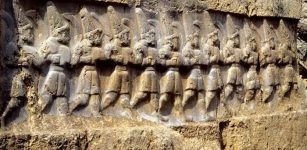 Secret Ancient Lunar Calendar May Be Hidden At A Hittite Sanctuary
Archaeology | Jul 3, 2019
Secret Ancient Lunar Calendar May Be Hidden At A Hittite Sanctuary
Archaeology | Jul 3, 2019 -
 Priceless Cuneiform Clay Tablets Of The Achaemenid Empire On Display At Qazvin Museum
Artifacts | Jul 24, 2020
Priceless Cuneiform Clay Tablets Of The Achaemenid Empire On Display At Qazvin Museum
Artifacts | Jul 24, 2020 -
 Cartography Shows That The Isthmus Of Tehuantepec Was Used As An Inter-Oceanic Passage In The 16th Century
Archaeology | Oct 21, 2022
Cartography Shows That The Isthmus Of Tehuantepec Was Used As An Inter-Oceanic Passage In The 16th Century
Archaeology | Oct 21, 2022 -
 Frightening Legend Of Tate’s Hell Swamp And The Curse Of The Native American Medicine Man
Featured Stories | Feb 12, 2022
Frightening Legend Of Tate’s Hell Swamp And The Curse Of The Native American Medicine Man
Featured Stories | Feb 12, 2022 -
 Strange Story Of Tecumseh’s Comet, Black Sun Prophecy And New Madrid Earthquakes – The Biggest Earthquakes In American History
Featured Stories | Nov 14, 2018
Strange Story Of Tecumseh’s Comet, Black Sun Prophecy And New Madrid Earthquakes – The Biggest Earthquakes In American History
Featured Stories | Nov 14, 2018 -
 Unknown Ancient World Discovered Beneath East Antarctic Ice Sheet
Earth Changes | Oct 24, 2023
Unknown Ancient World Discovered Beneath East Antarctic Ice Sheet
Earth Changes | Oct 24, 2023 -
 A Sensational Bronze Age Grave Of 20-Year-Old Elite Woman Found In Town Of Mány, Hungary
Archaeology | Aug 8, 2022
A Sensational Bronze Age Grave Of 20-Year-Old Elite Woman Found In Town Of Mány, Hungary
Archaeology | Aug 8, 2022 -
 Galileo Galilei’ Long-Lost Letter Reveals His Attempt To Fool The Inquisition And Make Science Independent From Religion
Archaeology | Sep 22, 2018
Galileo Galilei’ Long-Lost Letter Reveals His Attempt To Fool The Inquisition And Make Science Independent From Religion
Archaeology | Sep 22, 2018 -
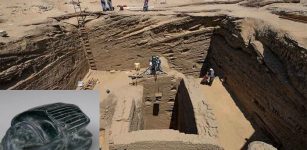 Unique Tomb Of Egyptian Commander Discovered In Abusir Sheds Light On ‘Globalisation’ In Ancient World
Archaeology | Jul 20, 2022
Unique Tomb Of Egyptian Commander Discovered In Abusir Sheds Light On ‘Globalisation’ In Ancient World
Archaeology | Jul 20, 2022 -
 Mystery Of The Cave Where People Vanish Or Become Disoriented
Featured Stories | Jan 2, 2024
Mystery Of The Cave Where People Vanish Or Become Disoriented
Featured Stories | Jan 2, 2024 -
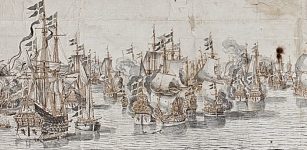 Missing ‘Delmenhorst’: 17th Century Danish Warship From ‘Battle Of Fehmarn’ Found
Archaeology | Sep 22, 2020
Missing ‘Delmenhorst’: 17th Century Danish Warship From ‘Battle Of Fehmarn’ Found
Archaeology | Sep 22, 2020 -
 Prometheus ‘Fire Bringer’ – Hero Stealing Fire From Gods Giving It To Mortals
Featured Stories | Sep 5, 2018
Prometheus ‘Fire Bringer’ – Hero Stealing Fire From Gods Giving It To Mortals
Featured Stories | Sep 5, 2018 -
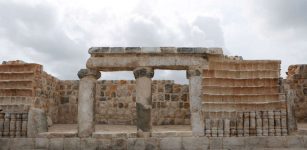 Ancient Mayan City Filled With Palaces, Pyramids And Plazas Discovered On Construction Site In Mexico
Archaeology | May 27, 2022
Ancient Mayan City Filled With Palaces, Pyramids And Plazas Discovered On Construction Site In Mexico
Archaeology | May 27, 2022 -
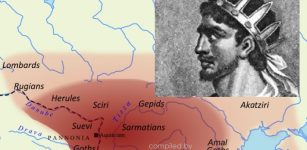 Attila The Hun: The Destroyer Of Rome Among Most Fearsome Enemies The Empire Ever Faced
Featured Stories | Jun 24, 2019
Attila The Hun: The Destroyer Of Rome Among Most Fearsome Enemies The Empire Ever Faced
Featured Stories | Jun 24, 2019 -
 3,000-Year-Old Geoglyphs May Depict The Heavens
Archaeology | Jun 25, 2018
3,000-Year-Old Geoglyphs May Depict The Heavens
Archaeology | Jun 25, 2018 -
 Reconstructing The Lost Ancient World Of The Marquesas Islands With Unique Plants And Animals
News | Mar 31, 2022
Reconstructing The Lost Ancient World Of The Marquesas Islands With Unique Plants And Animals
News | Mar 31, 2022 -
 Canaanite Wine Palace At Tel Kabri May Have Been Destroyed By Earthquake
Archaeology | Sep 15, 2020
Canaanite Wine Palace At Tel Kabri May Have Been Destroyed By Earthquake
Archaeology | Sep 15, 2020 -
 Story Behind A Huge Mysterious Ancient Rock Art Site In Central Queensland Revealed By Scientists
Archaeology | Sep 21, 2022
Story Behind A Huge Mysterious Ancient Rock Art Site In Central Queensland Revealed By Scientists
Archaeology | Sep 21, 2022 -
 Ancient Secrets Of Dougong Brackets: How 2,500-Year-Old Buildings Could Survive Earthquakes
Ancient History Facts | Jul 31, 2017
Ancient Secrets Of Dougong Brackets: How 2,500-Year-Old Buildings Could Survive Earthquakes
Ancient History Facts | Jul 31, 2017 -
 New Discovery: Unknown Use Of Yellow Colors In Ancient Egypt – Revealed
Archaeology | Oct 16, 2019
New Discovery: Unknown Use Of Yellow Colors In Ancient Egypt – Revealed
Archaeology | Oct 16, 2019





